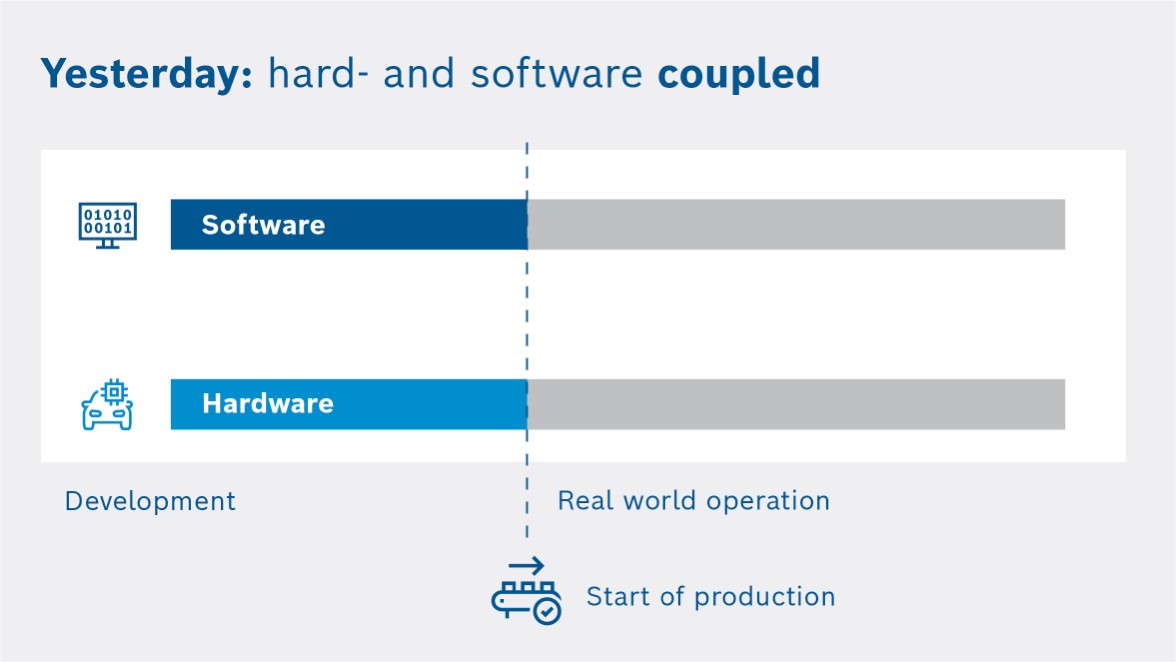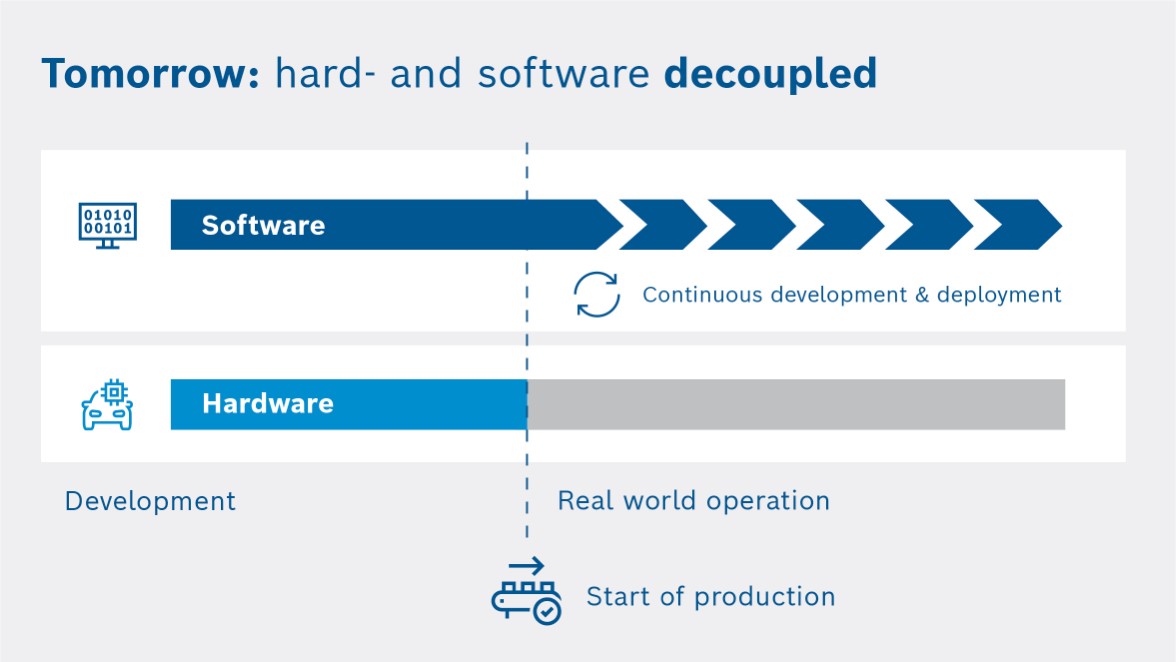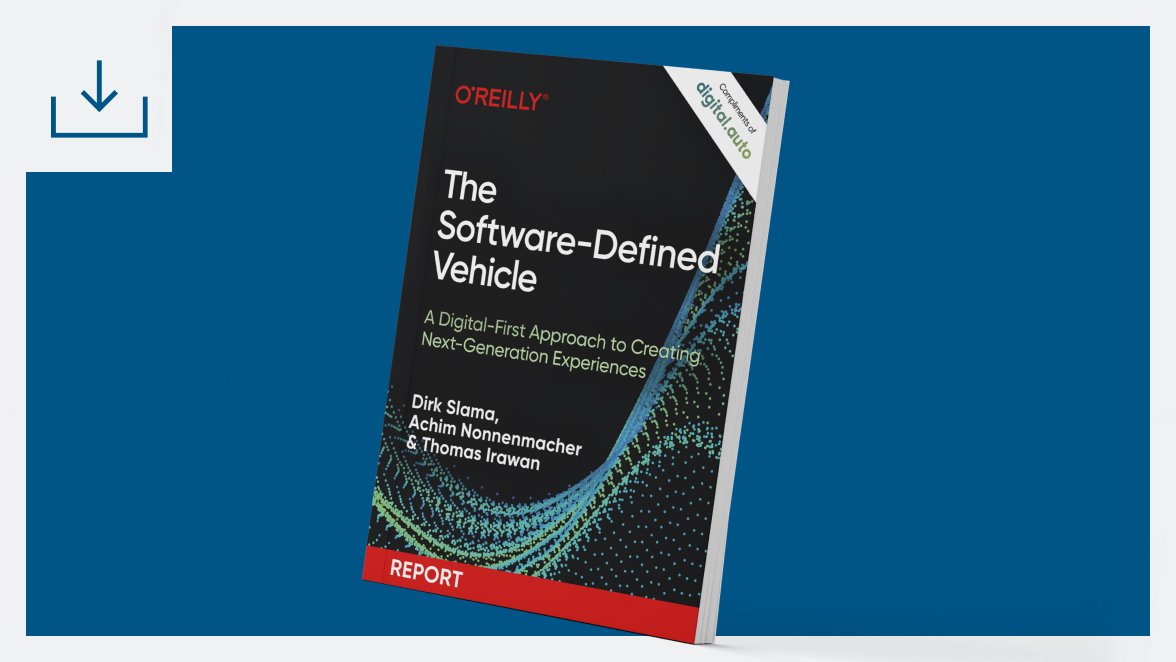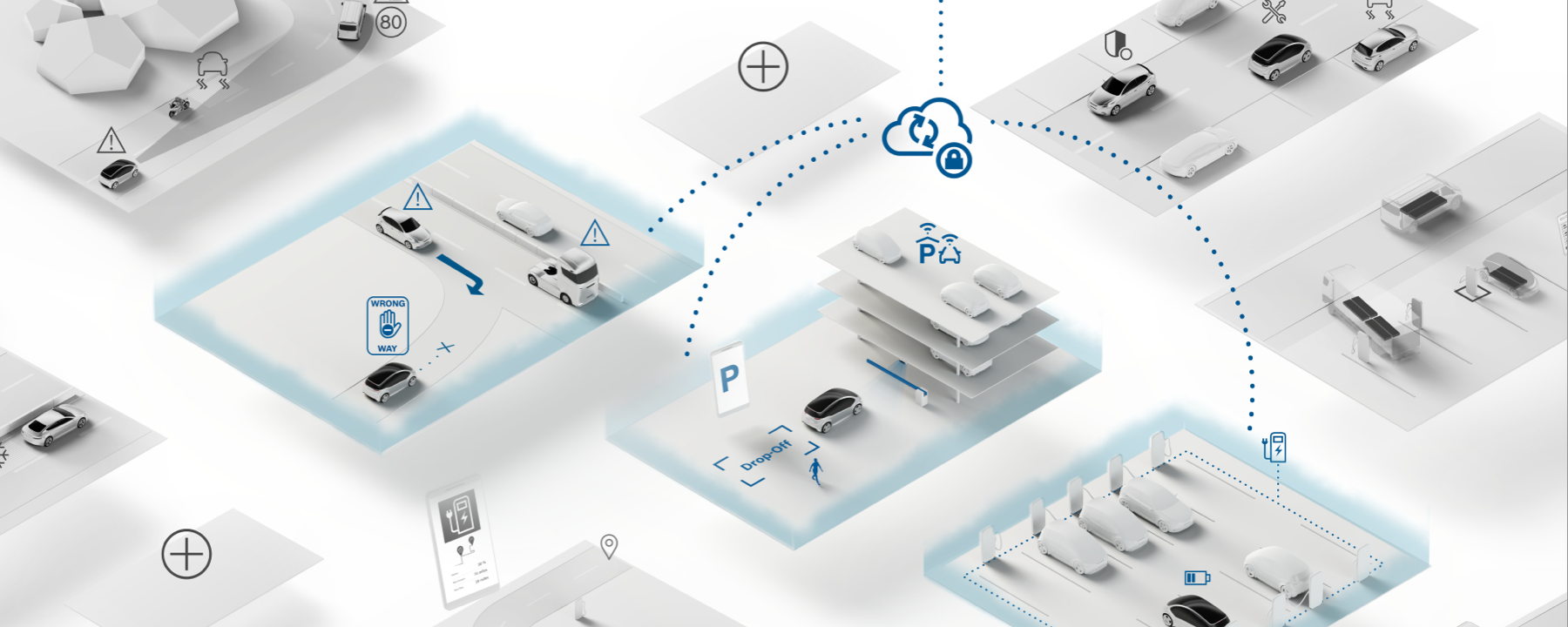With its ETAS GmbH subsidiary and their partners, Bosch is developing an open technology platform including an in-vehicle software stack. Bosch’s work here focuses on highly integrated development toolchains and vehicle-related cloud-platform services. This approach is based on the latest developments related to zone-oriented E/E architectures in combination with vehicle computers and ensures deep integration across all vehicle domains.

















